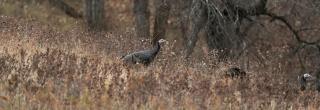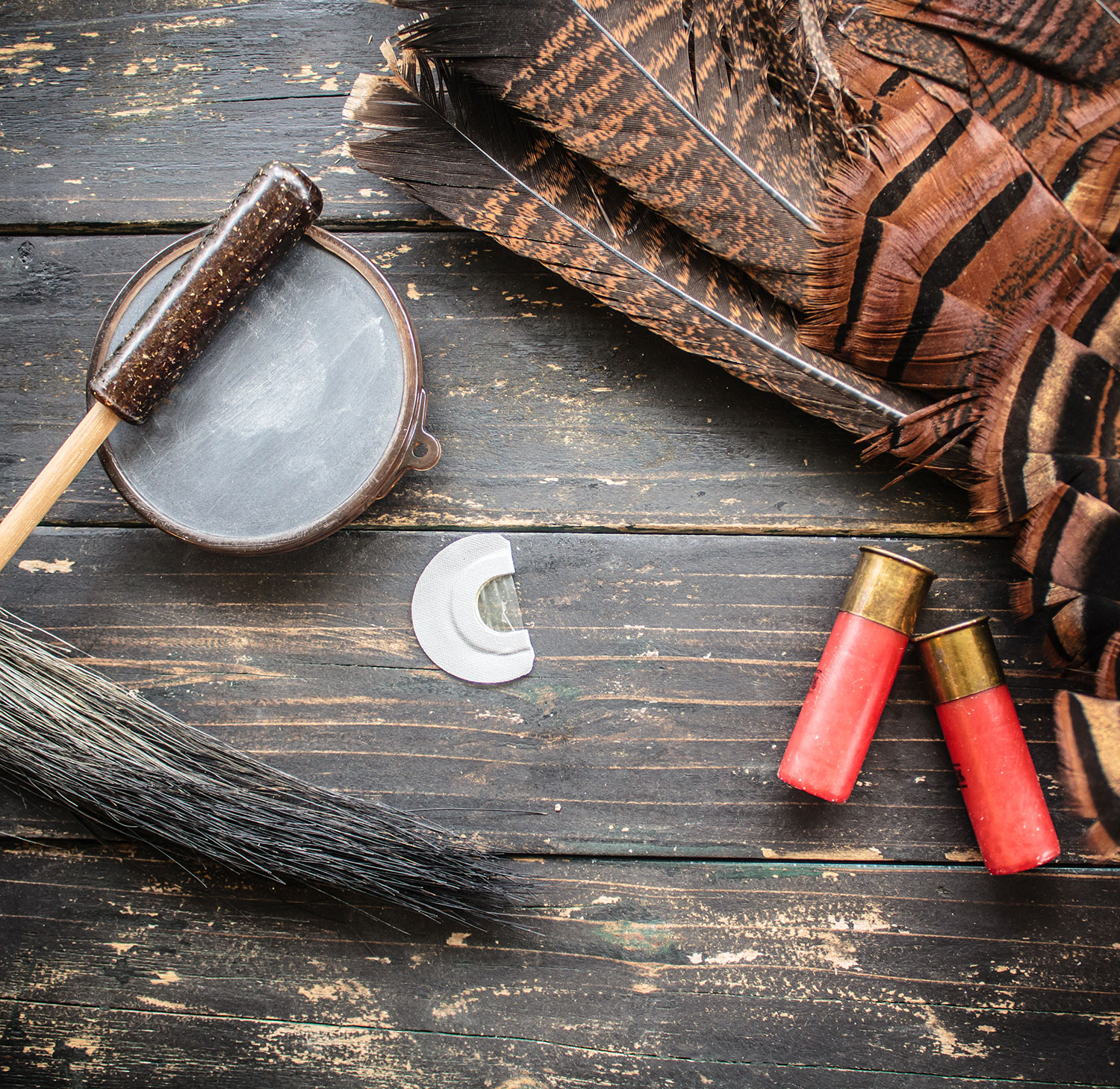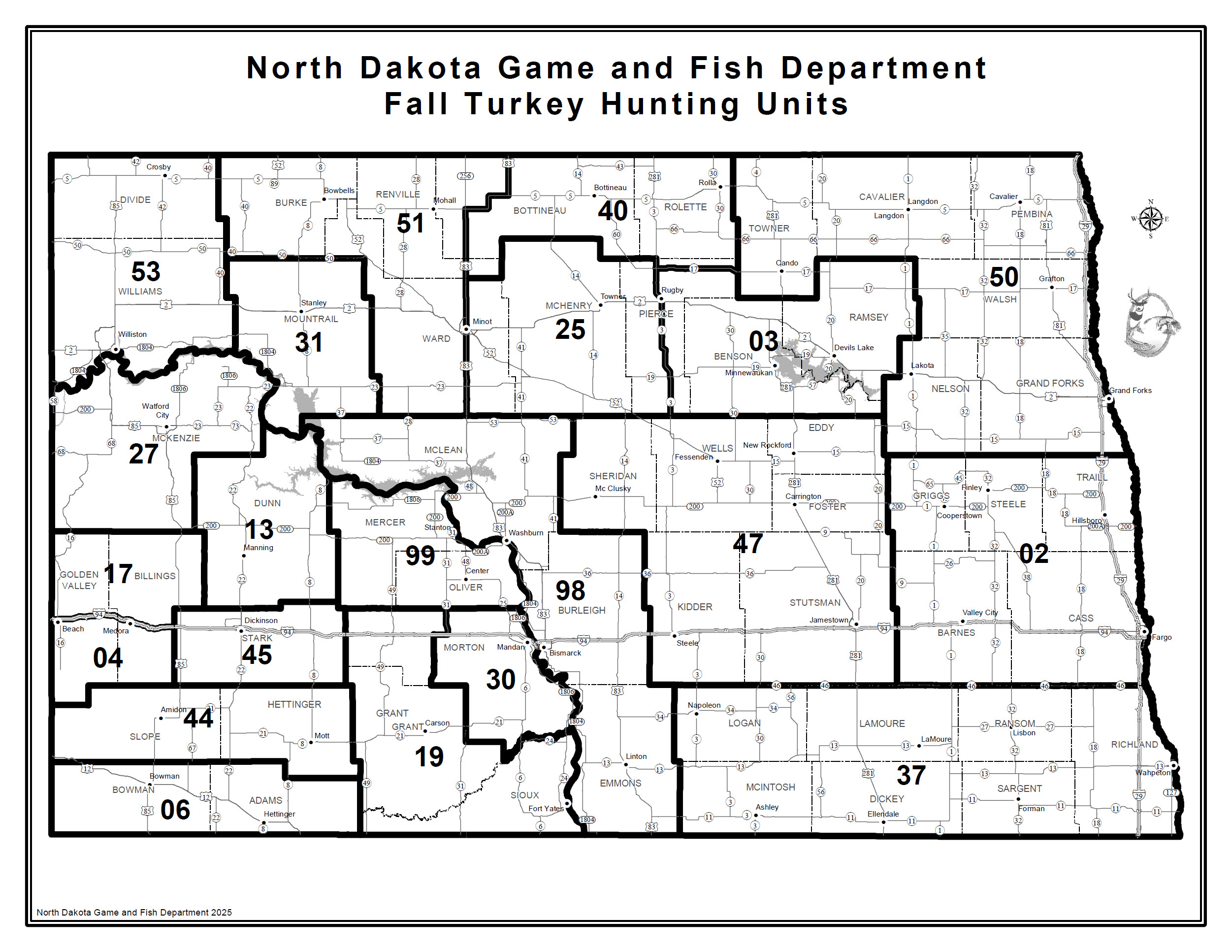
Start Hunting Fall Turkey
While fall turkey hunting can sometimes be deemed less exciting than hunting during the spring mating season, it can be a unique hunt to mix in with other fall adventures, a great opportunity to take someone new hunting, and a chance at procuring an excellent wild game holiday meal! Learn more in our fall turkey guide below.
1. Hunter Education
Anyone born after 1961 is required to take a certified hunter education course prior to obtaining a hunting license (with a couple of exceptions).
A one time apprentice license is available to those who would like to try hunting prior to taking the hunter education course. If you have an apprentice license, you must be accompanied by a licensed adult when hunting. Note: An individual who was issued an apprentice hunter validation license in 2020-21 may receive another.
Hunter education courses are taught by volunteers and offered throughout the year (though most are held January - March).
2. Find a Hunting Spot
- Turkeys roost in large trees. Finding the roosting areas and feeding areas are keys to patterning turkeys.
- Virtual scouting: Use the Hunting Atlas to locate public lands and private lands open to hunting.
- Hint: Turn on one of the the aerial or satellite imagery base layers to look for wooded draws with large trees.
- Ground truthing: Go for drives and walks in early morning listening for turkeys. Dewy mornings are great for observing upland game species because they leave thick vegetation to find open areas to dry off, often on roads or up in trees.
- If you find turkeys outside of lands open to hunting, identify who owns the land or politely visit with someone living in the area to try to figure out if they would give permission to hunt (although some landowners are reluctant to allow deer or pheasant hunting, turkeys are less desirable and even a nuisance species for some landowners, so it may be easier to get permission).
- Once you’ve chosen an area or areas you’d like to hunt, identify which turkey unit the land is in so you can apply for a license in that unit.
3. Apply for a License
Fall Wild Turkey Lottery
Fall turkey licenses are distributed via a lottery in August/September each year (view current season dates and application deadlines). You may also want to review our Guide to Lotteries for more information on how this works.
To help guide your decision you can:
- Check the license availability for each turkey unit.
- Review the previous season’s lottery statistics to understand your odds of drawing in a particular unit.
NOTE: Units which you have an increased likelihood of drawing may impact your decision of where to hunt and you may return back to Step 2 - Finding an Area to Hunt within this unit.
Additional Required Licenses
In addition to successfully drawing a fall wild turkey license in the lottery, you must also possess the following licenses:
- Residents:
- Fishing, Hunting, Furbearer Certificate
- Small Game License (Not required of residents under age 16) and General Game and Habitat License or Combination License (includes Small Game, General Game and Habitat, Furbearer, and Fishing licenses)
- Nonresidents:
- Fishing, Hunting, Furbearer Certificate
- General Game and Habitat License
4. Be Aware of Regulations
- Hunting regulations may change annually.
- Regulations and season dates are not finalized until after the annual season proclamation has been signed by the governor.
- After the proclamation has been signed, a hunting guide is published.
Note: One key difference between the fall and spring turkey seasons is that it is legal to take any turkey in the fall (not just bearded turkey).
5. Gather Some Gear

Firearms – Shotguns and archery equipment are legal to use while fall turkey hunting, but we recommend starting with a 20 or 12 gauge shotgun of any action with a modified or full choke.
Handguns and muzzle-loading long guns are also legal methods of take in the fall, but illegal in the spring.
Ammunition - Typical shotgun shot sizes used for turkeys are 4, 5, and 6. There are even some loads designed specifically for turkeys with extra weight or distance abilities. Note: you’ll need to use non-toxic shot if hunting on a USFWS Waterfowl Production Area or National Wildlife Refuge
Other gear:
- Camouflage clothing – turkeys have particularly good eyesight making camouflage clothing more important than in some other types of hunting
- Layers – weather can vary greatly
- Boots
- Backpack (optional) – carry your shells, or other gear
- Stool, bucket, or chair to sit on (optional)
- Decoys (optional)
- Ground blind (optional)
- Calls (optional)
- Box call – cheap and easy to use
- Mouth diaphragm call - cheap, slightly challenging but hands-free
- Slate call – most expensive but still relatively easy to use
Hunting Strategies
Fall turkey hunting differs from the spring in that the birds are not mating. They may be in larger groups and are not very vocal so hunting strategies are different. It is also worth noting that it is legal to harvest any turkey in the fall vs. the bearded-only spring season.
Spot and Stalk - Drive, hike, or use binoculars to locate turkeys from a distance. Utilize landscape features (tree rows, topography, etc.) to quietly sneak *within shooting distance.
Sit and Wait – Observe turkeys over time and see if you can key in on movement patterns (e.g. between roost and feeding areas). Set up a ground blind or simply utilize a tree or shrubs to help camouflage yourself and wait for turkeys to walk by *within shooting distance.
Note: In late fall, turkeys often move to private lands in search of supplemental food sources (grains or grain bales). Landowners often have low tolerance for turkey flocks, so it is worthwhile to stop and ask permission if you see turkeys on private lands. In addition, the Department maintains lists of landowners who want fewer turkeys, so it’s beneficial to call to see if there are places in your hunting unit where hunting would be welcomed. In these situations (called depredation hunts), the success rate for sitting and waiting is very high.
Calling – In the fall, male turkeys are not mating and thereby gobbling so you cannot really count on calling one in. But, you could still utilize calling and decoys to add to your camouflage or draw birds into shooting range that are already passing through.
Additionally, people will sometimes intentionally flush a group of turkeys from a roosting area at which point the flock may call to re-locate each other and you can utilize a call to imitate this and hopefully bring one *within shooting distance.
*Shooting Distance: Typical turkey loads for shotguns are most lethal within 30-40 yards—you can get good at judging this distance by stepping off 30-40 large steps and looking back to see what that distance looks like.

Ask an Expert
Do you still have questions about hunting turkey in North Dakota?

